|
Fokker D.VII (OAW)
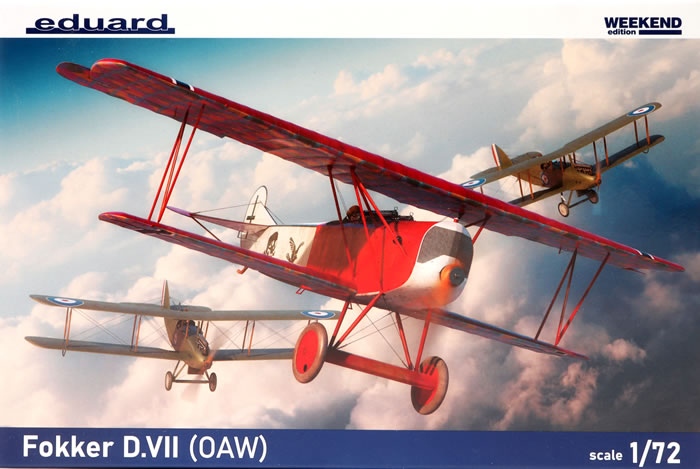
Eduard Weekend Edition,
1/72 scale
S
u m m a r y |
| Catalogue Number: |
Eduard ProfiPACK Kit No.7407 - Fokker D.VII (OAW) Weekend Edition |
| Scale: |
1/72 |
| Contents and Media: |
See details below. |
| Price: |
USD$19.95 plus shipping,
available online from Eduard
GBP£10.80 EU Price (GBP£9.00 Export Price) plus shipping available online from Hannants |
| Review Type: |
FirstLook |
| Advantages: |
Great moulded parts with superb detail, terrific decal choices and very clear instructions. |
| Disadvantages: |
How do you pick one from those four colourful choices? |
| Conclusion: |
This is a wonderful kit of a very significant aeroplane from the First World War that will more than satisfy the modeller of equipment from the era. How nice to see it available again and it comes highly recommended. |
Reviewed by Graham Carter

"The Fokker D.VII was a German World War I fighter aircraft designed by Reinhold Platz of the Fokker-Flugzeugwerke. Germany produced around 1300 D.VII aircraft in the second half of 1918. In service with the Luftstreitkräfte, the D.VII quickly proved itself to be a formidable aircraft.

The Armistice ending the war specifically required, as the fourth clause of the "Clauses Relating to the Western Front", that Germany should surrender all D.VIIs to the Allies. Such were its feared abilities! This did not stop Fokker in Holland from continuing production and eventually some 3300 were built for use in air forces across Europe in the 1920s.
(From Wikipedia)
The kit has been around since 2019 and has been released in number of versions and decals options to make the best use of the the substantial range of parts on the sprues. This Weekend Edition release from Eduard is the D.VII built by the Ostdeutsche Albatros Werke (OAW). The sturdy, slightly bigger than A4 sized, top-opening box comes with a great illustration of Karl Monnington’s red and white aircraft being pursued by a couple of DH9s. As a Weekend Edition it lacks any PE or masks and includes four decal choices - but what fascinating ones they are.
Parts are sealed in a large resealable clear sleeve and consist of two large dark grey sprues. These are beautifully moulded with lovely surface detail and some very finely rendered parts, especially the struts. Most sprue gates are small and generally attached to ‘safe’ places. Most small parts have small bugs attached, clearly designed to enable plastic to be fully extrude into the sprues, thereby precluding short-shooting.
There are a motza of unused parts as the kit is designed to represent a number of different versions of the aircraft, witness the releases so far. I counted 43 unused parts for engines, radiator fronts, wheels, guns and props.
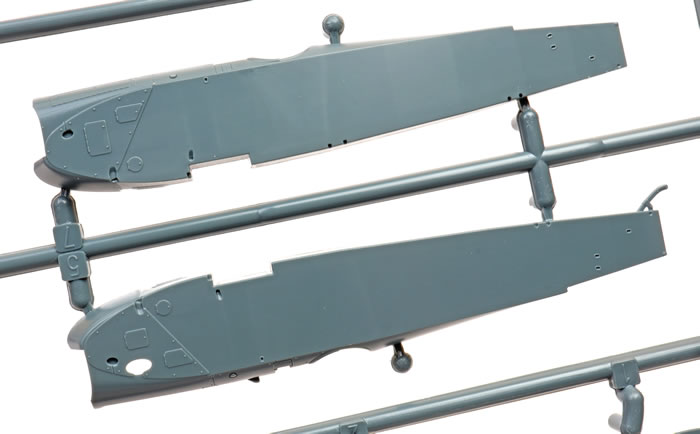
There are two full fuselages to cater for the different decals choices and, along with the other spare parts, I can imagine that any modeller with access to a set of flying surfaces (say from a scrap Revell kit or the vac-formed biplane blanks produced by Aeroclub a few decades ago) and the ability to scratch-build some struts, should be able to build up two models from this kit to use up the spare decals.
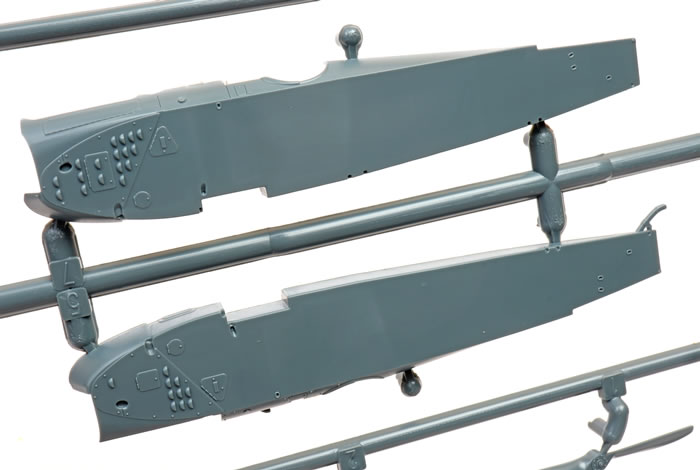
The interior is well detailed with a seat and frame, floor , rudder bar, compass, control stick, instrument panel and moulded detail on the fuselage interiors. As well there is a seven-part engine which can be exposed by cutting away certain panels as indicated in the instructions. Speaking of which, we find a full-colour twelve page A4 booklet which starts with a great description of the development, variants and uses of the D.VII.
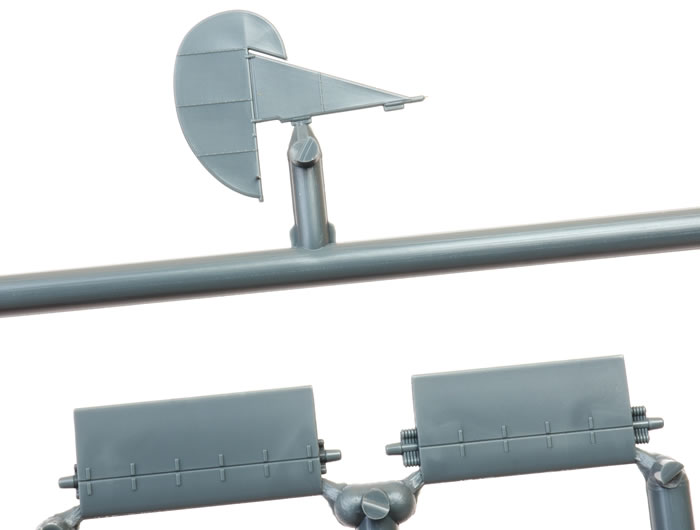
Then there is a parts map and colour guide in names and Gunze and Mission Model paint numbers. The construction occupies five pages , some of the steps being given capital letter but others, not. All detail colours are called out at each stage and part placement drawings are very clear. Any alternative parts or cutting of parts for some options, are clearly indicated. The final pages are taken up with colour four-view drawings of the decal choices plus a diagram to show the locations of the rib tapes ( incorrectly called RIP STRIPES).
Markings
The decals occupy two sheets in their own clear sleeve, the larger one covering the upper and lower lozenge, rib tapes and elevator/fin edging.
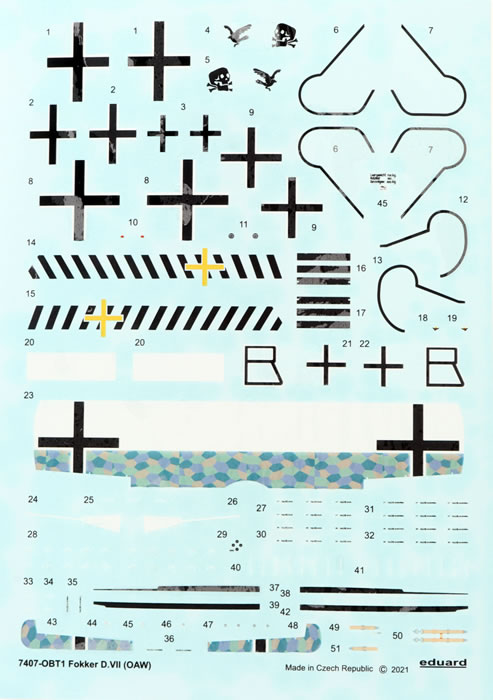
The four colourful choices are all from August-September 1918 and are:-
-
red and white one flown by Lt. Kurt Monnington of Jasta 18 at Mantay-Flanville, France,
-
blue and white one of Lt. d. R. Hans Besser of Jasta 12 at Chery-les-Pouilly, France,
-
Yellow and white one No. 4499/18 of VzFlgMstr. Franz Mayer of MFJ III, Jabbeke , Belgium, and
-
black and white one of Lt. Walter Blume of Jasta 9 at Sissone in France.
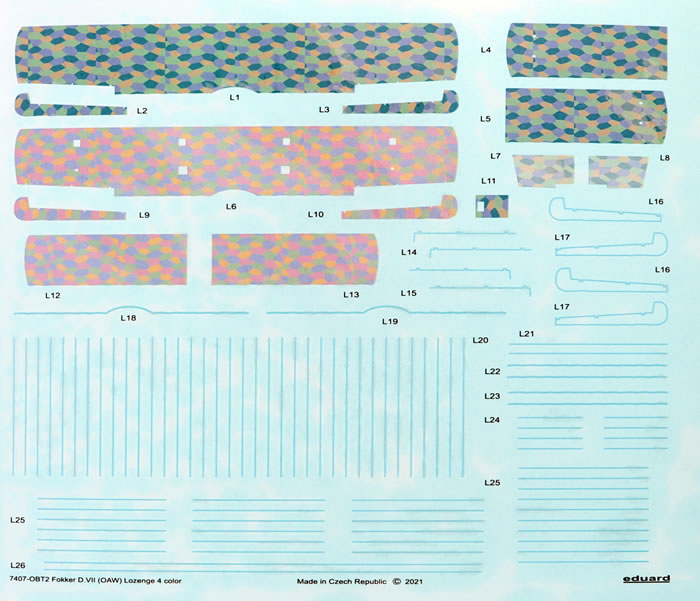
All aircraft have lozenge wing coverings.
The aeroplane had no inter-plane rigging, and just two wires on the undercarriage so is an ideal starter biplane. It really is a great kit and I would highly recommend it to the modeller of WWI or key aircraft in the history of aerial warfare.
Thanks to Eduard for the sample
Review Text Copyright © 2021 by Graham Carter
Images Copyright © 2021 by
Brett Green
Page Created 28 September, 2021
Last updated
28 September, 2021
Back to HyperScale Main Page
Back to Reviews Page |
